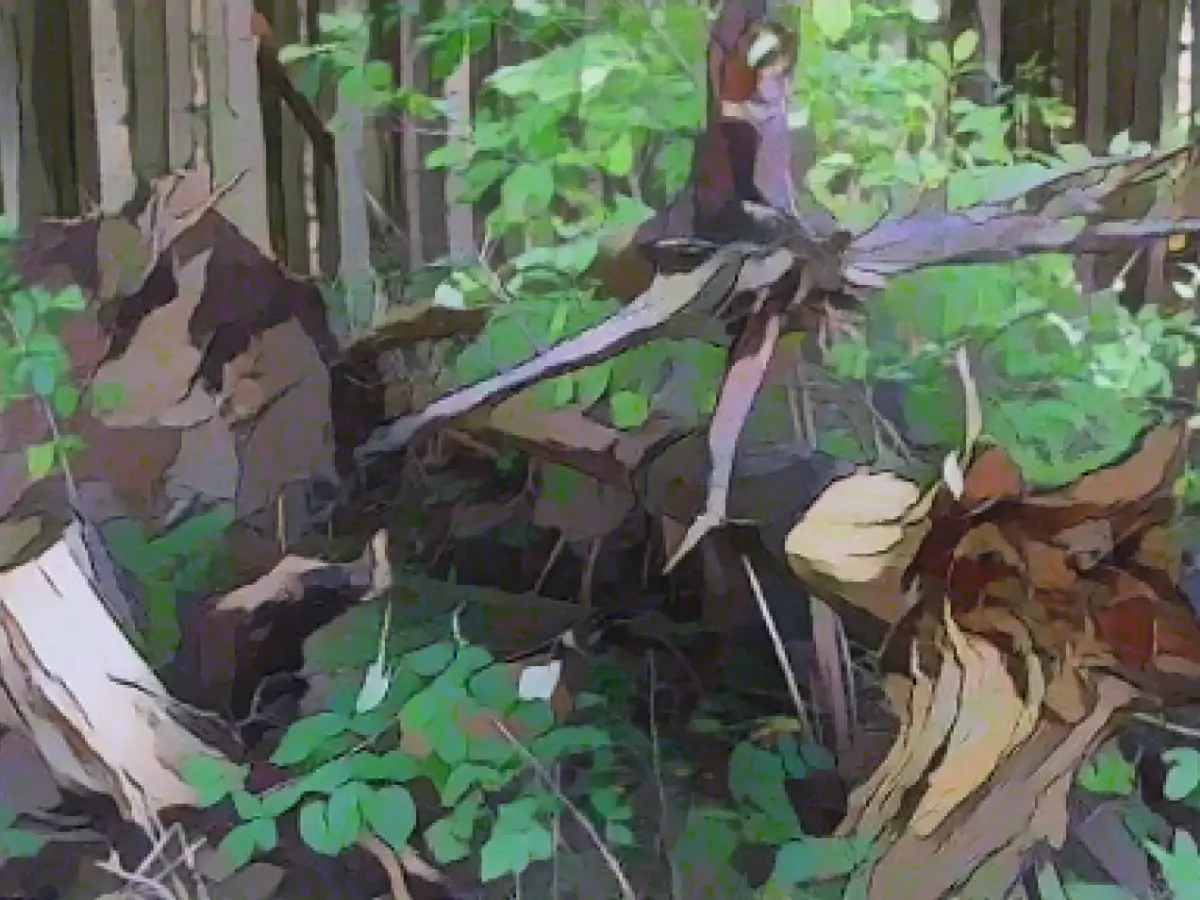Becoming a Forest Sleuth: The Forestry Office Detective
Forester-turned-detective, Simon Elsenhans, spends more time behind his desk than roaming the woods of Göppingen district, Baden-Württemberg. Why? Inquisitive phone calls and doorstep visits are his foremost tasks, as the burning question looms: Who, indeed, owns these sprawling forests?
Baden-Württemberg's Ministry of Agriculture reports that municipalities and local authorities own a whopping 40% of the district's forest land. Close behind come private forest owners, commanding nearly 36%.
Elsenhans, overseeing the Deggingen forest district, becomes acquainted with Sabine Schmid, a third or fourth-generation private forest owner. Their meeting uncovers the need to review Schmid's property and discuss management techniques.
Yet not all forest owners are cognizant of their wooded estates or the necessary actions to maintain them, like the complications that arise across extended families. This ignorance may have repercussions, ranging from thwarting ecological conversion to dealing with bark beetle infestations.
Anticipating unavoidable damage in forests due to environmental factors like storms, droughts, or bark beetle invasions, active forest management is essential for numerous reasons, according to a Ministry of Agriculture spokesperson. Swift action protects the remaining forest from further harm, such as the mass spreading of bark beetles.
However, Elsenhans encounters a familiar issue: While he can look into the forest, addressing the problem poses challenges due to strict property rights constraints. Rather than resorting to legal notices, he emphasizes reaching out to and engaging forest owners in dialogue. Once contact is established, "it works," he believes.
In instances where the local forestry office cannot determine who owns a particular piece of land, the process often leads to collaboration with the local authority. But, even here, records stretch back as far as 1920. Research into the village's background and relatives offers the best course of action, as indicated by Diana Tröger, the forestry office deputy head.
If forest owners can be identified, the forestry office facilitates joint maintenance and planting campaigns, asserts Tröger. This coordinated approach saves resources while managing the myriad, small forest plots typically possessed by private owners. The Göppingen forestry office is also available to handle the forestry needs for a fee.
To inspire and support private forest owners, Baden-Württemberg's Ministry of Agriculture has turned to digital solutions, such as the "WaldExpert app," designed to help private landowners locate their forests and swiftly connect with responsible forestry professionals.
Eager to revitalize her forest next year, Schmid envisions removing damaged trees and replanting.
Further Reading:
Insights:
Digital solutions like the "WaldExpert app" can significantly enhance the engagement and activation of private forest owners in environmental conservation, offering various benefits, ranging from educational content and real-time data, to community engagement and incentives.
- Educational Content:
- Interactive video tutorials and guides on sustainable forest management practices discussed.
- Real-Time Data and Monitoring:
- Sensor and drone integration for tracking forest health, including temperature, humidity, and soil moisture levels.
- Community Engagement:
- Discussion forums and collaboration groups that foster a sense of responsibility and collaboration among members.
- Personalized Recommendations:
- AI-driven insights tailored to each forest's specific conditions and management needs.
- Early Warning Systems:
- Integration of fire alerts to help prevent and manage wildfires in wooded areas.
- Certification Programs:
- Guidance through eco-friendly product and tourism incentive programs.
- Consultation Tools:
- Direct access to forestry experts for addressing specific management issues.
Utilizing these app features can enhance private forest owners' experience and effectiveness in implementing sustainable and responsible forestry practices.








